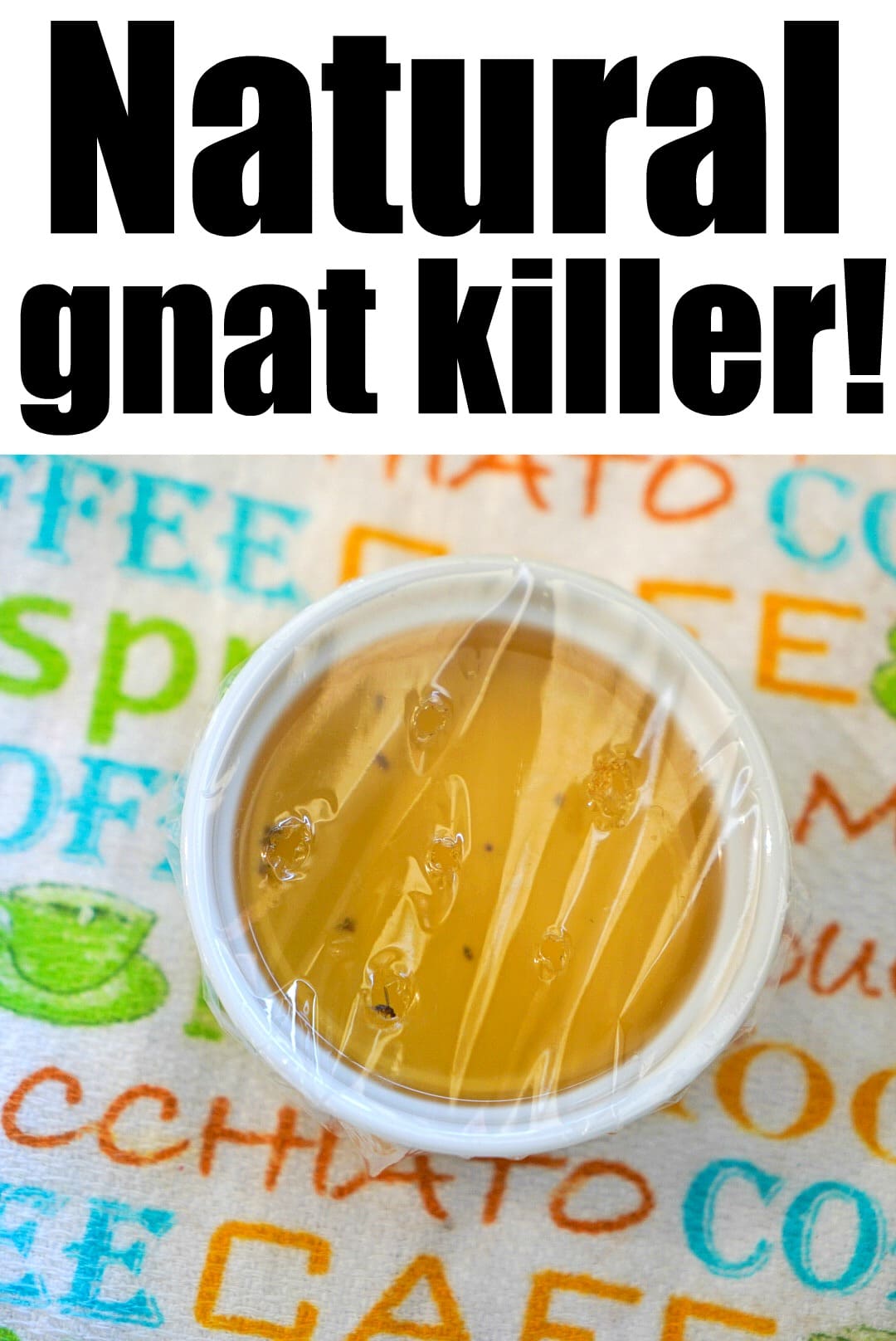Table Of Content

Be it rotting fruit, overwatered plants or you simply forgot to wipe up a sugary spill, these can easily attract a swarm of gnats. Gnats thrive on the fungus of your plants, so it helps to let your plant babies dry out between waterings. Once the soil dries out, you'll notice the death of not only the fungus, but the gnat larvae and eggs too.
Gnats are swarming in Houston. Here's how to get rid of them - Houston Chronicle
Gnats are swarming in Houston. Here's how to get rid of them.
Posted: Sat, 06 Apr 2024 07:00:00 GMT [source]
Skip Watering Your Plants.
If you're bedeviled by other pests, we've also get tips on how to get rid of mosquitoes, how to get rid of moths as well as how to get rid of ants and how to get rid of fleas. To share feedback or ask a question about this article, send a note to our Reviews Team at Gnats are an annoying presence in a home whichever of the types of small insect to which we give this name we’re talking about. They seem to appear out of nowhere, and they’re pests in whichever room you find them. Diatomaceous earth (DE) is made from naturally occurring fossilized diatoms (a type of algae). To make a paper funnel, simply twist a piece of paper to the shape of a funnel, and add some tape to hold it.
Fungus Gnats
So, allow the top 2” (5 cm) of soil to dry out before watering your houseplant. Always check that the plant soil is partly dry before adding water. Fungus gnats mostly thrive in moist environments in the household. They are common in households with houseplants, and they lay eggs in wet soil. Their presence in plant nurseries means that you can bring them into your house with a plant without realizing it. You may find them in your houseplants' soil, or on the rim of the pot.
How to best get rid of gnats around the house for good - mySA
How to best get rid of gnats around the house for good.
Posted: Sun, 02 Jul 2023 07:00:00 GMT [source]
Buy a Natural Trap
All of these species, along with the others that are less likely to infest indoor locations, are spread across the globe. No region in the world is immune to these annoying little bugs. However, they don’t damage homes like other insects, and they’re generally considered nothing more than nuisances.
8 Insects That May Be The Small Black Flying Bugs in Your House (That Aren’t Fruit Flies)
And while they're more nuisance than nasty, having hundreds of fungus gnats buzzing around your living room is far from pleasant. Garden gurus and agricultural scientists alike seem to agree that neem cake, also called neem meal, is a helpful fungus gnat fighter. Well, you need to make it into a plant tea and apply it regularly. The key to getting rid of fruit flies in your bathroom or kitchen is to practice proper sanitation. Make sure that you’re cleaning out your garbage cans and dumpsters, eliminating any decaying organic matter from inside.
Diatomaceous earth is a naturally occurring silica powder that should kill these bugs as they emerge from the potting soil. Neem oil to eliminate houseplant flies —This oil is a natural insecticide that disrupts the fungus gnats’ hormones. You can use neem oil as both a soil flush and an organic insecticidal homemade spray. Fruit flies, gnats, and drain flies will gravitate to the scent and drown when they get stuck in the soap film.
If your plant soil is infested with gnat larvae and you’re having trouble getting rid of them, repot your plants. This will cut down on the moisture-rich breeding grounds that gnats love. You can invest in a soil moisture monitor to accurately measure the amount of water in your soil, which will help prevent overwatering. No, it’s unlikely that gnats will go away on their own once they start reproducing. You will need to take proper measures to get rid of them, such as putting away your fruits, flushing out your drains, or changing the soil in your indoor plants’ pots. You can also attract fruit flies with red wine and a couple drops of dish soap in a glass or jar.
To eliminate your bug problem, you sometimes have to bring them right to you. Combine two tablespoons of apple cider vinegar, half a cup of warm water, six drops of dishwashing liquid and a tablespoon of sugar into a mixture. The sugar is especially important, as it will lure in the bugs, leaving them trapped in the sticky solution. They typically have slender, brown or black bodies and thrive where there’s moisture. They also prefer sand or sandy soil, meaning states like California and Florida can be particularly prone to gnats. Place a few pieces of overripe or rotting fruit in a large bowl, cover with plastic wrap and secure with a rubber band.

How to Get Rid of Gnats in the Garden
The tiny flying pests lay their eggs in the potting soil where they hatch into larvae. The gnat larvae thrive in damp soil and can quickly harm the roots of young plants. You may notice these bugs in your houseplant soil or they may fly around your plants. When gnat larvae grow into flying insects, the gnats can quickly infest other plants in your home with fungal diseases. Fungus gnats are common houseplant pests in the family Sciaridae.
They can also be found near sinks, drains, and toilets, since they can reproduce in the grime inside pipes. If your kitchen becomes infested with gnats because of fresh fruit sitting out, you can use that fruit to get rid of fruit flies. Rather than making a trap with apple cider vinegar, as described in the previous section, you can place bits of your overripe fruit in a small glass, bowl, or jar. Cover the container with plastic wrap and poke small holes into the plastic with a toothpick. Take the right measures and you can do plenty to prevent an infestation of gnats in your home. Although fungus gnats and drain flies aren’t thought to be harmful to human health, that doesn’t mean they don’t cause a nuisance plus who wants them buzzing around?
Gnats are attracted to damp spots to lay eggs, particularly affecting houseplants since they like to lay eggs in moist soil. A gnat infestation can damage some houseplants, causing wilting, loss of leaves, and leaf yellowing. Most gnats don’t bite, sting, or spread disease, but they’re still a nuisance, particularly indoors. These annoying insects are attracted to sweet smells, body heat, sweat, and other forms of moisture.
Fungus from mold or mildew in your home can also be a contributing factor. Similar to fruit flies, gnats are tiny flying insects that include fungus gnats, fruit flies, and drain flies. Usually, fungus gnats are dark with long legs around 2.5 mm in size; fruit flies tend to be brown, while drain flies have moth-like wings and are usually found anywhere near water. You may have noticed that there are a lot of gnats around your indoor plants. This is often because plant soil is moist, which can be a breeding ground for gnats. Imagine fruit flies buzzing as you cook dinner, fungus gnats hovering over your houseplants or nasty creatures lingering in your kitchen sink.
You will most probably find them flying around your fruit bowl, the trash bin, and open alcohol bottles. They thrive in the summer, but sometimes, you may also see them during the cold months in your house. Gnats is also a name used broadly to refer to different types of small flies including, fruit flies, fungus gnats, and drain flies. Fruit flies look like tiny house flies, and they have large, red eyes.

No comments:
Post a Comment